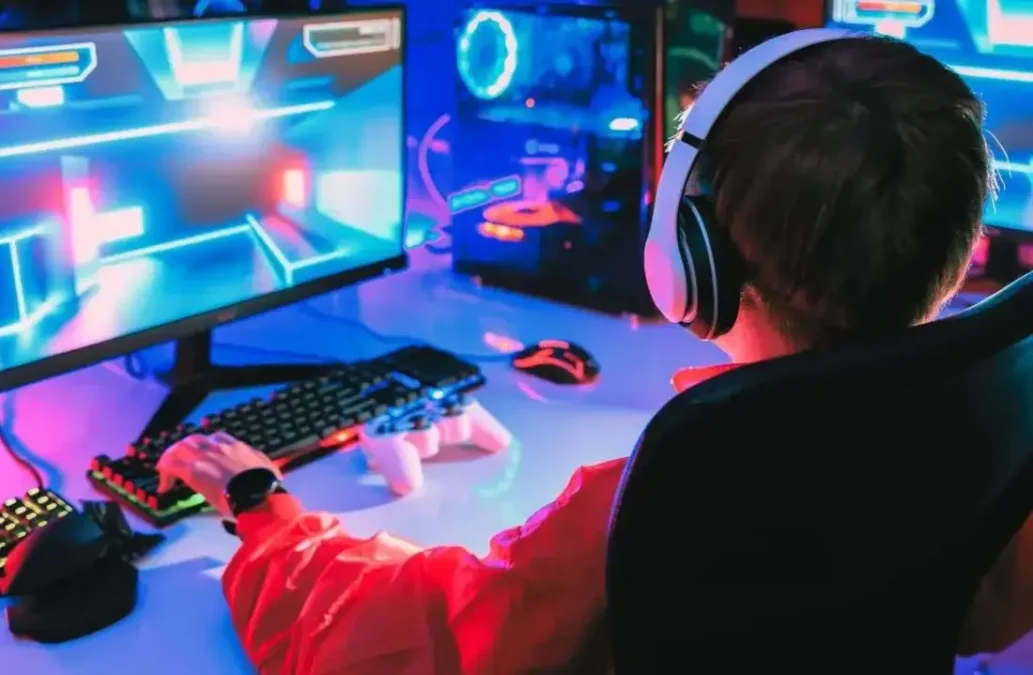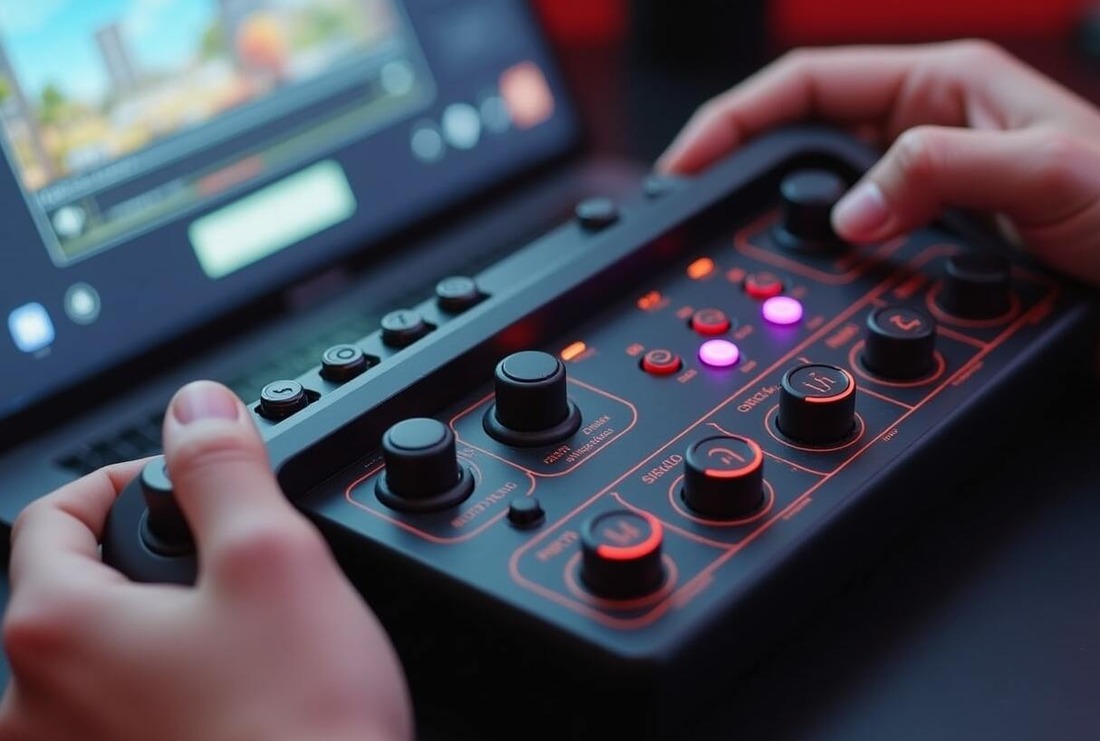The world of gaming has been evolving rapidly, with new trends, technologies, and gaming genres continuously emerging. One of the latest and most intriguing developments in this space is the concept of Harmonicode Gaming. While the term may sound unfamiliar to many, it is slowly gaining traction as a promising fusion of technology, design, and immersive gaming experiences. In this article, we’ll explore what Harmonicode Gaming is, its potential impact on the gaming industry, and how it may shape the future of entertainment.
What is Harmonicode Gaming?
At its core, Harmonicode Gaming is a term that refers to a novel integration of sound, music, and coding to create more immersive and interactive gaming experiences. The word “harmonicode” is a combination of “harmony” and “code,” signaling the blending of auditory elements with digital coding to bring about new possibilities for game development.
The idea behind harmonicode is simple yet profound: it aims to leverage the power of sound and music in ways that influence the game mechanics, environment, and overall experience. This may involve integrating music that responds to the player’s actions or designing a game where the environment’s atmosphere shifts based on soundscapes, creating an interactive experience that goes beyond visuals and gameplay mechanics alone.
In harmonicode gaming, the traditional concept of coding is infused with the principles of music and sound design. By carefully crafting sound frequencies, melodies, and rhythms, game developers can design more dynamic, reactive environments where the audio plays an active role in shaping the player’s journey.
The Role of Sound in Harmonicode Gaming
Sound has always been an important aspect of gaming. From the earliest sound effects in retro games to the immersive soundtracks of modern AAA titles, audio has contributed to the overall gaming experience. However, in the case of harmonicode gaming, sound does more than just set the tone or complement visuals – it becomes an integral part of gameplay itself.
One key feature of harmonicode gaming is how the game world responds to sound stimuli. For example, in certain games, players might have the ability to manipulate the game environment by emitting specific sounds, triggering in-game events or unlocking hidden levels. This form of sound-based interaction would require players to be mindful of the musical or rhythmic elements within the game.
Additionally, harmonicode gaming could introduce entirely new genres or gameplay mechanics, where sound-based puzzles, rhythm-based challenges, or reactive audio environments become central to the experience. This could also inspire new genres of games that focus primarily on the relationship between sound and code, such as music-driven games, sound-based puzzles, or rhythm-based adventure games.

The Impact of Harmonicode Gaming on Game Development
The integration of sound and music into the coding process will likely have a profound impact on how games are developed. Game developers will need to think about coding from a musical perspective and incorporate sound as a key part of the game’s narrative, design, and mechanics.
Traditional game development involves a clear distinction between visuals, gameplay mechanics, and audio. With harmonicode gaming, however, these elements would need to be blended together harmoniously. Developers may have to work closely with sound designers, musicians, and composers from the outset of the project, ensuring that the game’s soundscape is seamlessly integrated with its interactive components.
Furthermore, the use of sound-based interactions could lead to more experimental game designs, where developers push the boundaries of traditional gameplay. Instead of relying solely on conventional inputs like buttons and joysticks, players may need to interact with the game using sound-producing devices, microphones, or other specialized tools that respond to player-generated audio.
Harmonicode Gaming and Virtual Reality (VR)
One of the most exciting possibilities for harmonicode gaming lies in the realm of Virtual Reality (VR). VR technology already provides immersive gaming experiences by placing players inside virtual worlds, but harmonicode could take this immersion to the next level. By incorporating dynamic sound interactions, VR games could be made even more responsive and engaging.
In a VR harmonicode game, players could use their voice, musical instruments, or even ambient sounds in their environment to influence the gameplay. For instance, players might have to sing a particular melody to unlock a door or solve a puzzle. Alternatively, the virtual world could respond to the player’s own heartbeat or ambient sound frequencies in real-time, further blurring the line between the player’s physical presence and the digital world.
The combination of immersive VR visuals with reactive sound design would create a truly sensory experience, where the player’s auditory and visual perception are intricately linked. This could also inspire innovative VR applications beyond gaming, such as therapeutic experiences, sound-based learning, or even virtual performances.
The Future of Harmonicode Gaming
As technology continues to advance, it’s likely that harmonicode gaming will evolve into a more prominent force within the gaming industry. The potential for sound and music to influence gameplay mechanics, storytelling, and environmental design opens up a new frontier for game developers.
Looking ahead, we can expect to see more games that integrate harmonicode principles in ways that are both innovative and engaging. Game developers will likely explore how sound can create more nuanced interactions, whether by designing environments that are responsive to player actions or by developing entirely new genres that prioritize sound-based gameplay.
Additionally, as technology improves, we might see advancements in AI-driven music systems that allow for more sophisticated soundscapes. For example, an AI could generate personalized music based on the player’s progress or behavior, adapting the soundtrack dynamically to enhance emotional impact. This personalized sound experience could become a key selling point for games in the future.
Furthermore, the rise of technologies like 5G networks, cloud gaming, and immersive VR/AR could make harmonicode gaming more accessible and scalable. The ability to play immersive, sound-driven games across multiple devices and platforms could push the concept of harmonicode gaming into the mainstream, attracting a broader audience and inspiring further innovation in the gaming world.
The Intersection of Music, Technology, and Gaming
Harmonicode gaming represents a natural intersection of music, technology, and interactive entertainment. Music has always played a significant role in influencing emotions and perceptions, and by integrating sound into the very fabric of game design, harmonicode gaming pushes the boundaries of what we expect from video games.
With its emphasis on the connection between sound and code, harmonicode gaming also offers exciting opportunities for cross-disciplinary collaboration. Developers will need to work closely with musicians, sound engineers, and technologists to create compelling audio-driven gameplay experiences. These collaborations could open up new avenues for innovation, creating richer and more varied gaming experiences than ever before.
Conclusion: Embracing the Future of Harmonicode Gaming
Harmonicode Gaming is an exciting concept that could radically alter the way we think about and experience digital entertainment. By combining the principles of music, sound design, and coding, harmonicode gaming introduces new possibilities for interactive, immersive experiences that go beyond traditional gameplay mechanics.
As this concept evolves, we can expect to see more experimental game designs, more immersive VR/AR experiences, and more dynamic interactions between the player and the game world. Whether through sound-based puzzles, interactive environments, or responsive music systems, harmonicode gaming has the potential to revolutionize the gaming industry.
For developers and players alike, the rise of harmonicode gaming is a call to embrace innovation and explore new ways to engage with interactive entertainment. The future of gaming is bound to be sound-driven, and the harmony between code and music will play a central role in shaping the experiences of tomorrow. As we venture into this new era of gaming, it will be fascinating to see how developers and players adapt to this thrilling new frontier.




